Human CXCL10 (IP-10) ELISA MAX™ Deluxe 5 Plates
CXCL10, also known as IP-10, is a glutamic acid-leucine-arginine motif negative chemokine structurally and functionally related to MIG (CXCL9) and ITAC (CXCL11). CXCL10 is induced in a variety of cells in response to interferon-γ and lipopolysaccharide. These cell types include monocytes, macrophages, fibroblasts, and epithelial cells. CXCL10 (IP-10) chemoattracts CD4+ and CD8+ T cells, NK, and NKT cells via binding to its receptor CXCR3, which is shared with MIG and ITAC.
CXCL10 inhibits neovascularization in tumors and in wound healing in vivo. It also has anti-proliferative effects on endothelial cells in vitro, and angiostatic and antitumor effects in vivo. It has been suggested that the antiproliferative effect of CXCL10 in endothelial cells is CXCR3-independent and that it is mediated through glycosaminoglycan interaction. CXCL10 also possesses antimicrobial activity against E. coli and L. monocytogenes, and both the spore and bacillus forms of B. anthracis. It has been reported that CXCL10 may be important in the pathogenesis of chronic HCV infection, and the circulating CXCL10 concentration was increased in the early and subclinical stage of Type I diabetes patients. CXCL10 was significantly up-regulated in the salivary glands of patients with Sjögren’s Syndrome. It also has been reported that CXCL10 was increased in the urine of patients with pulmonary diseases in the absence of renal dysfunction.
Both the ELISA MAX™ Set Standard and ELISA MAX™ Set Deluxe are specifically engineered for accurate recovery and measurement of analytes in complex fluids, such as serum and plasma (as well as activated cell cultures) without any interference by confounding serum factors, such as heterophilic antibody or rheumatoid factor.
- Reactivity
- Human
- Application
ELISA
- As a part of BioLegend's efforts to go green, each new lot of the ELISA MAX™ sets will include a summarized version of its manual. Click here for more information.
- Application References
(PubMed link indicates BioLegend citation)
- Abou El Hassan M, et al. 2015. PLoS One.10:126466. PubMed
- Hassan M, et al. 2015. PLoS One. 10:126466. PubMed
- Millrine D, et al. 2016. Proc Natl Acad Sci U S A. 113: 10625 – 10630. PubMed
- Sensitivity
- 4 pg/mL
- Standard Range
- 15.6-1,000 pg/mL
- Materials Not Included
- A microplate reader capable of measuring absorbance at 450 nm
- Adjustable pipettes to measure volumes ranging from 2 µL to 1 mL
- Deionized (DI) water
- PBS (Phosphate-Buffered Saline): 8.0 g NaCl, 1.16 g Na2HPO4, 0.2 g KH2PO4, 0.2 g KCl, add deionized water to 1 L; pH to 7.4, 0.2 µm filtered.
- Wash Buffer (Phosphate-Buffered Saline (PBS) + 0.05% Tween-20, pH=7.4). BioLegend Cat. No. 421601 is recommended.
- Wash bottle or automated microplate washer
- Stop Solution (e.g. 2N H2SO4) Biolegend Cat. No. 423001 is recommended
- Log-Log graph paper or software for data analysis
- Tubes to prepare standard dilutions
- Timer
- Plate Sealer
- Absorbent paper
- Kit Contents
- Human CXCL10/IP-10 ELISA MAX™ Capture Antibody (200X)
- Human CXCL10/IP-10 ELISA MAX™ Detection Antibody (200X)
- Human CXCL10/IP-10 Standard
- Avidin-HRP (1000X)
- Substrate Solution F
- Matrix Diluent C (for serum and plasma samples)
- Coating Buffer A (5X)
- Assay Diluent A (5X)
- NUNC Maxisorp™ 96 MicroWell Plates
- Cell Sources
- Monocytes, macrophages, fibroblasts, and epithelial cells
- Gene ID
- 3627View all products for this Gene ID
- UniProt
- View information about CXCL10 on UniProt.org

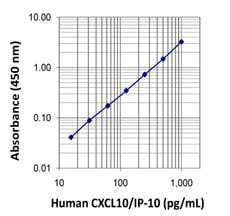
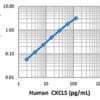
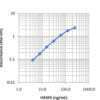
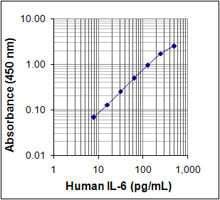
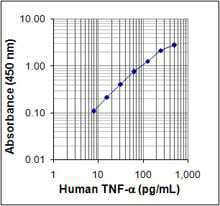
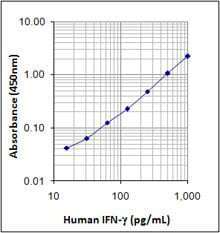
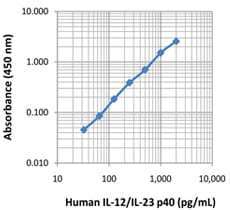
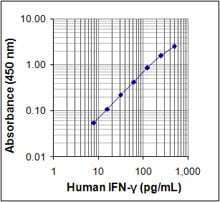
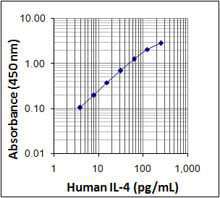
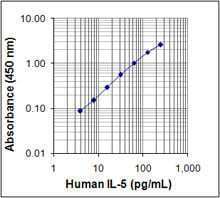
Reviews
There are no reviews yet.